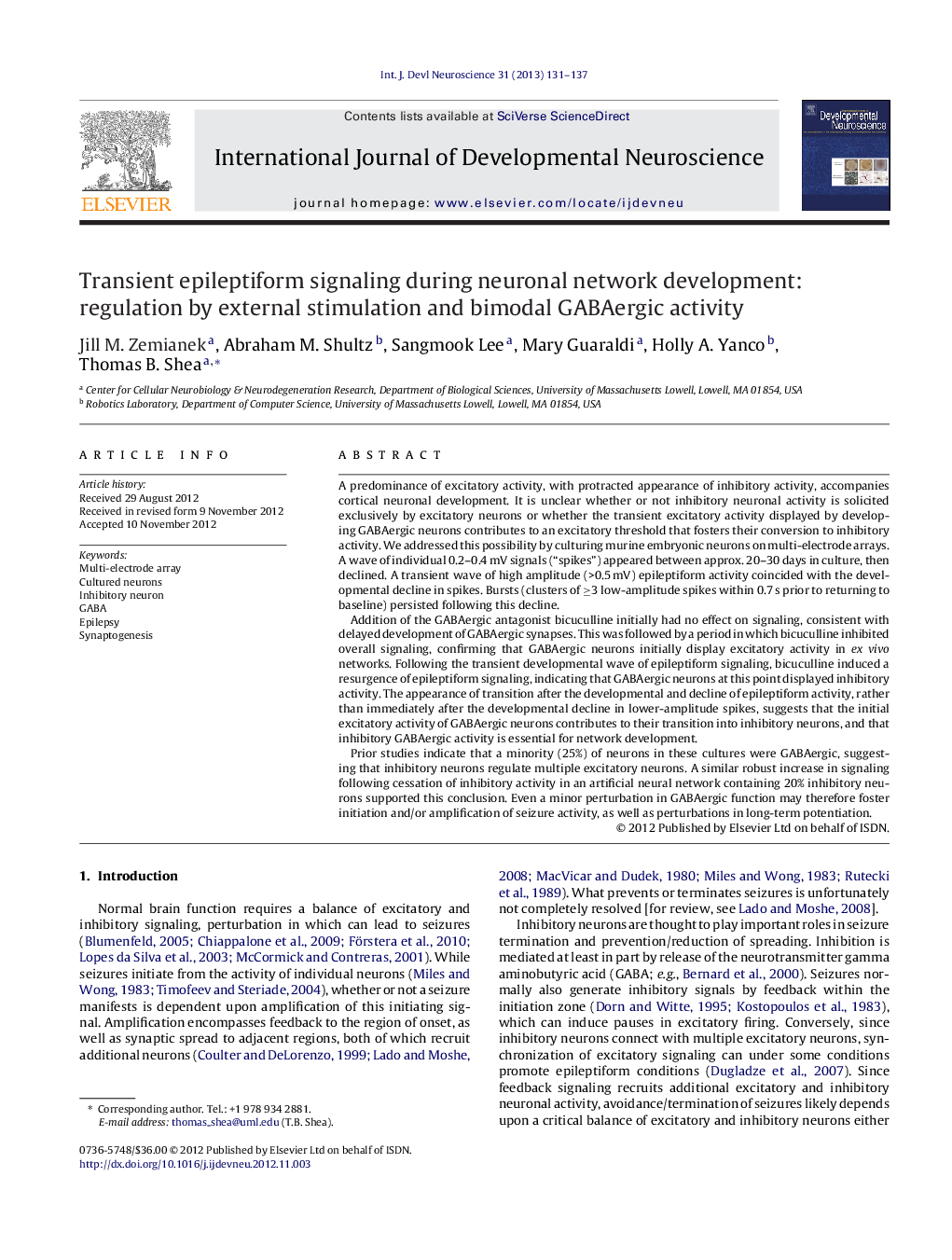| Article ID | Journal | Published Year | Pages | File Type |
|---|---|---|---|---|
| 2785931 | International Journal of Developmental Neuroscience | 2013 | 7 Pages |
A predominance of excitatory activity, with protracted appearance of inhibitory activity, accompanies cortical neuronal development. It is unclear whether or not inhibitory neuronal activity is solicited exclusively by excitatory neurons or whether the transient excitatory activity displayed by developing GABAergic neurons contributes to an excitatory threshold that fosters their conversion to inhibitory activity. We addressed this possibility by culturing murine embryonic neurons on multi-electrode arrays. A wave of individual 0.2–0.4 mV signals (“spikes”) appeared between approx. 20–30 days in culture, then declined. A transient wave of high amplitude (>0.5 mV) epileptiform activity coincided with the developmental decline in spikes. Bursts (clusters of ≥3 low-amplitude spikes within 0.7 s prior to returning to baseline) persisted following this decline.Addition of the GABAergic antagonist bicuculline initially had no effect on signaling, consistent with delayed development of GABAergic synapses. This was followed by a period in which bicuculline inhibited overall signaling, confirming that GABAergic neurons initially display excitatory activity in ex vivo networks. Following the transient developmental wave of epileptiform signaling, bicuculline induced a resurgence of epileptiform signaling, indicating that GABAergic neurons at this point displayed inhibitory activity. The appearance of transition after the developmental and decline of epileptiform activity, rather than immediately after the developmental decline in lower-amplitude spikes, suggests that the initial excitatory activity of GABAergic neurons contributes to their transition into inhibitory neurons, and that inhibitory GABAergic activity is essential for network development.Prior studies indicate that a minority (25%) of neurons in these cultures were GABAergic, suggesting that inhibitory neurons regulate multiple excitatory neurons. A similar robust increase in signaling following cessation of inhibitory activity in an artificial neural network containing 20% inhibitory neurons supported this conclusion. Even a minor perturbation in GABAergic function may therefore foster initiation and/or amplification of seizure activity, as well as perturbations in long-term potentiation.
Graphical abstractFigure optionsDownload full-size imageDownload high-quality image (161 K)Download as PowerPoint slideHighlights► A balance of excitatory and inhibitory neurons regulates mature signaling. During development, inhibitory neurons are initially excitatory. ► Suppression of inhibitory neurons in culture indicated that the initial excitatory activity of inhibitory neurons mediated this transition. ► Since inhibitory neurons are a minority, even a minor perturbation of their development could contribute to seizure initiation and potentiation.
